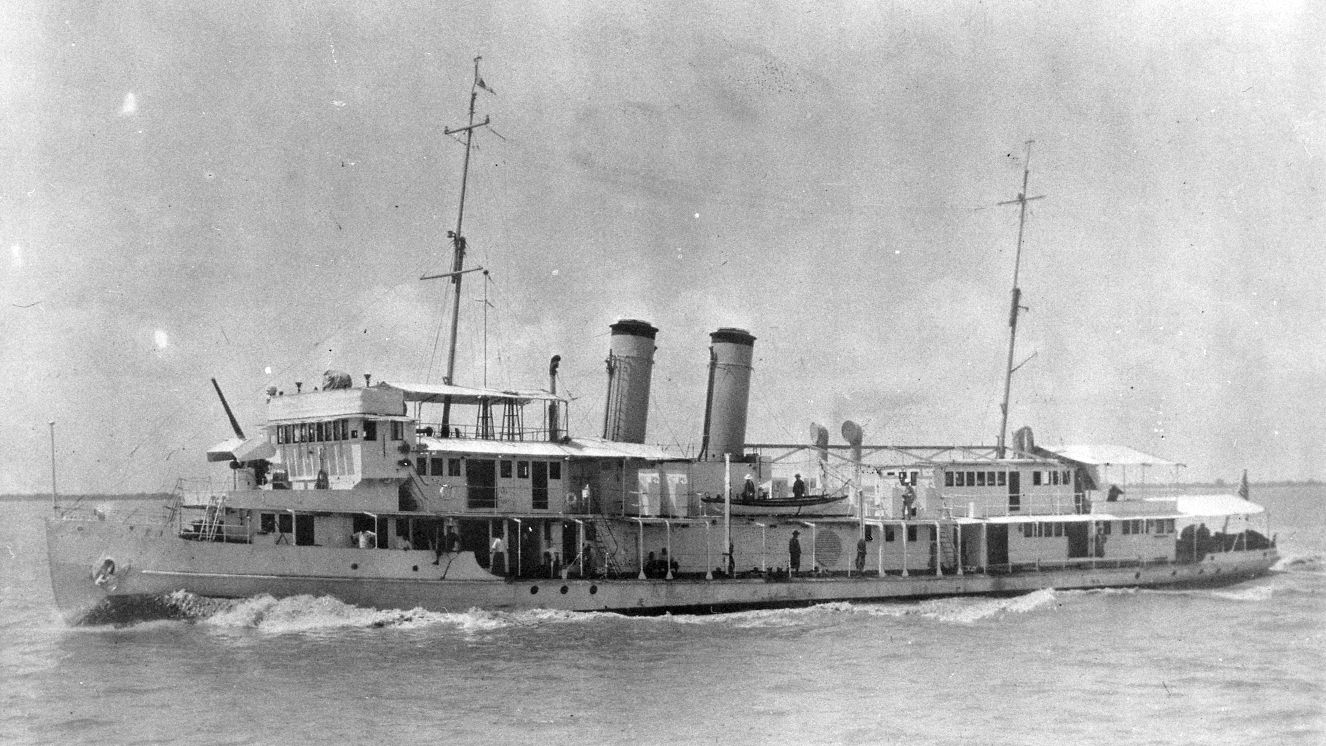REAL LIFE STAR WARS? US MILITARY LASER WEAPONS TO BE USED IN BATTLE

Lasers have been around since 1960, and less than three decades later, they were weaponized. It’s the classic "science gets curious, and then the governments of the world decide to use it for their military." It’s been more than 62 years, and while their use isn’t completely widespread, US military laser weapons are becoming more and more prominent on the battlefield. Everything from defensive measures to non-lethal weaponry to shooting jets out of the sky is on the menu. Explore why laser weapons are becoming one of the top military prospects and the future of warfare for every country around the world.
What Are Laser Weapons?
Countries worldwide are quickly developing high-energy laser weapons for use in air, space, and land-based military operations. Rather than relying on expensive and possibly overpowered missile-based defenses, militaries are developing and using laser weapons in anticipation of hordes of low-cost, small drones taking to the sky or patrolling the seas. Military applications for high-energy lasers are growing, partly due to advancements in high-power industrial laser technology. One of their main advantages is the "infinite magazine" that high-energy laser weapons offer. A high-energy laser has an unlimited supply of ammo compared to conventional weapons like guns and cannons, which are limited and can only fire for as long as they have ammo. The U.S. Army is using a high-energy laser mounted on a truck to fire down various targets, such as rockets, helicopters, mortar shells, and drones. In February 2024, the Army sent four of the devices for frontline testing in the Middle East. The 50-kilowatt laser is on the Stryker infantry fighting vehicle. The U.S. Navy has deployed a ship-based high-energy laser to fend off drones, missiles, and small, swiftly moving ocean surface vehicles. In August 2022, the Navy added a 60-kilowatt US laser weapon to the USS Preble destroyer. The Air Force is developing high-energy lasers for use in both offensive and defensive aircraft missions. In 2010, the Air Force tested a modified Boeing 747 equipped with a megawatt laser, striking a ballistic missile mid-launch. The Air Force is presently developing a more compact armament system for fighter aircraft. It looks like Russia is working on a high-energy laser for use on the ground to "blind" the satellites of their enemies.
How Do Lasers Work?
A laser produces photons, or light particles, by means of electricity. The amount of photons grows quickly when they pass through a gain medium, which is a substance that produces a cascade of more photons. A beam director then focuses all of these photons into a narrow beam.Since the first laser was introduced in 1960, engineers have created a range of lasers that produce photons at different electromagnetic spectrum wavelengths, ranging from ultraviolet to infrared. Military applications for high-energy laser systems are based on solid-state lasers that transform electrical energy input into photons using certain crystals. High-power solid-state lasers are notable for their ability to produce invisible photons to the human eye since they originate in the infrared region of the electromagnetic spectrum. Depending on its photon wavelength, beam power, and surface material, a laser beam can produce various effects when interacting with a surface. Useful light sources for pointers and light displays at public events are low-power lasers that produce photons in the visible spectrum. Because of their low power, these beams reflect off surfaces, causing no harm to them.Medical operations include using higher-power laser devices to cut through biological tissue. The strongest lasers are employed in industrial processes for cutting and welding because they have the ability to heat, evaporate, melt, and burn through a wide variety of materials.The distance between the laser and its target determines its power output and capacity to provide these different effects.
Limitations of US Laser Weapons
A significant obstacle armies face using high-energy lasers is the huge amount of power necessary to produce meaningful effects from a distance. In contrast to an industrial laser, which might be only a few inches away from its target, military operations require much longer ranges. US laser weapons must engage their targets to stop an approaching threat, such as a mortar round or a small boat, before they can cause any damage.However, the laser beam needs to have tens to hundreds of kilowatts of power in order to burn through materials at safe distances. The tiniest laser weapon prototype consumes 10 kW of electricity, which is about the same as an electric vehicle. The most recent high-power laser weapon under development requires 300 kW of power, which is sufficient to run 30 households. Furthermore, high-energy lasers produce a significant quantity of waste heat, which has an efficiency of about 50% and needs to be controlled.This means that the kinds of effects that can be produced from various military systems are limited because high-energy lasers require a large power generation and cooling infrastructure. These systems can only take down drones and disable missiles—targets that require relatively modest power because Army trucks and Air Force fighter jets have the least space for high-energy US military laser weapons. Larger high-energy lasers that have the capacity for burning holes in boats. Permanent ground-based devices offer the greatest power and the fewest limitations, which might allow one to blind a far-off satellite potentially.Another significant limitation of platform-based high-energy US military laser weapons concerns the concept of an infinite magazine. The lasers can only be in use for a short period of time before they need to be recharged. This is because the power source must be carried by truck, ship, or airplane, which reduces its capacity.High-energy laser weapons have basic limitations as well, such as decreased efficacy in conditions like rain, fog, and smoke that scatter laser beams. To do harm, the laser beams must also stay fixed onto their targets for a number of seconds. Maintaining the current generation of US military laser weapons in conflict zones is proving difficult.
Issues on Laser Weapons and What to Expect in the Future
Science fiction has long featured laser weaponry, even predating the invention of lasers themselves. US military laser weapons are also heavily mentioned in a few conspiracy theories that others believe to be true. Both fiction genres emphasize the importance of comprehending the true functionality and applications of laser weaponry.In the past few years, a new kind of conspiracy theory has surfaced, alleging that evil forces have utilized high-energy lasers launched from aircraft to ignite wildfires in Texas, Hawaii, and California. This is not likely at all for a number of reasons.A sizable power source mounted on an aircraft would be necessary to achieve the power level required to ignite plants with a high-energy laser fired from the sky. That size of the plane would have been well visible before any fires started. The laser beams seem green in certain photos that purport to depict the flames being sparked, but high-energy laser beams are invisible.High-energy laser weapons will soon be reaching higher power levels, enabling them to target a wider variety of targets.High-energy lasers are likely to have nonmilitary uses as well, such as protecting civilians from terrorist assaults, given the growing threat posed by inexpensive, weaponized drones.
Does the U.S. Have Laser Weapons?
Yes, the United States has laser weapons. In fact, we have several and continue to build more. We’re not just talking about laser sights on a gun either. From offense to defense, there are a lot of things this form of weaponry can accomplish.
From Sci-Fi to the Battlefield, the Future Is Here
If you’re looking to pinpoint a U.S. laser weapon, you’re going to need to understand just how many weapons are available. Though this technology is still under development, it doesn’t mean there haven’t been efforts made.In addition, we aren’t the only country working to advance such weapons. These are several examples that have been used or researched by the U.S. and other countries in the pursuit of a better laser weapon:
- 1K17 Szhatie
- ALKA
- AN/SEQ-3 Laser Weapon System
- Advanced Tactical Laser
- Airborne Laser
- Area Defense Anti-Munitions
- Beriev A-60
- Boeing Laser Avenger
- Boeing YAL-1
- Dazzler
- Deployable Tactical Engagement System
- Dragonfire
- Evolutionary Air and Space Global Laser Engagement
- Gas Dynamic Laser
- HELRAM
- High Energy Liquid Laser Area Defense System
- Iron Beam
- Light Blade
- MIRACL
- Multiple Integrated Laser Engagement System
- Omega
- Peresvet
- Personnel Halting and Stimulation Response Rifle (PHASR)
- Plasma Acoustic Shield System
- Polyus
- Protocol on Blinding Laser Weapons
- Self-Protect High-Energy Laser Demonstrator
- Silent Hunter
- Skyguard
- Small Arms Weapons Effects Simulator
- Sokol Eshelon
- Solar-Pumped Laser
- Soviet Laser Pistol
- Tactical High Energy Laser
- Terra-3
- ZEUS-HLONS (HMMWV Laser Ordnance Neutralization System)
- ZKZM-500
- ZM-87
The list above is only part of the many US military laser weapons and systems. If you look closely, there are many different types available.For example, the Small Arms Weapons Effects Simulator (SAWES) is a non-lethal training weapon simulating live fire for the British Army during the ‘80s. The Iron Beam, on the other hand, is an air defense system. Furthermore, the Boeing Laser Avenger is a development for the U.S. looking to manufacture UAVs.Some of these weapons have come and gone, others are still available. Now, the U.S. is looking at a high-energy laser weapon system that is the most powerful version ever. Adirected energy weapon system points toward the future of warfare, and it appears the future is here.
The Stryker Infantry Fighting Vehicle Is Getting a Major Upgrade
Were there years of development and plenty of delays? Absolutely. But the U.S. Army is finally getting to put US military laser weapons on its Stryker vehicles. The delays were in place to be sure that they could develop the systems at scale. Now that they can, they're ready for release.“We want to make sure when we actually transition a program or a capability that we mature not just the prototype from an operational capability but have a good competitive space and good manufacturability processes in place as well to make that PEO successful,”said the new RCCTO chief Lt. Gen. Robert Rasch.Directed Energy Maneuver-Short Range Air Defense (DE M-SHORAD) Stryker vehicles are getting 50-kilowatt laser weapons nicknamed “Guardian,” according to the Army’s Rapid Capabilities and Critical Technologies Office (RCCTO).Developed by Raytheon Technologies, the DE M-SHORAD laser system has been performing well as a prototype. It is ready to counter drones, mortar, and rocket fire. This is an increasingly important concept as threats from drones persist in the Middle East, Europe, and Asia.More than just power, the focus and attraction of these US military laser weapons are the fact that they are easier to maneuver. This is due to being lightweight and more cost-effective than other weaponry.In addition to these new developments, the Army is looking into laser-equipped infantry carriers featuring a 20 kW laser weapon that will complement the vehicles.
Cancelled Project on Equipping Fighter Jet With US Military Laser Weapon
The U.S. military's most recent project to defend ground soldiers from ballistic missiles appears to be going to waste after years of research. Originally developed as a laser weapon mounted on fighter jets, the Self-Protect High-Energy Laser Demonstrator (SHiELD) was launched in 2016. According to a 2023 Congressional Research Service report, it was intended to neutralize incoming air-to-air and surface-to-air missiles as well as ballistic missiles that might target U.S. forces overseas.The SHiELD laser system was successfully tested on the ground, but the Air Force chose not to test it using active fighter jets. According to the Air Force, this is because another airborne laser project was shelved owing to technological issues. The Air Force remains optimistic about the potential of airborne laser weapons despite these issues since they are affordable and efficient.The Defense Department's current focus is on strengthening air defenses due to the growing missile threats from enemies. Ground-based laser weapons are currently in use, but the department faces challenges in maintenance. The Air Force continues to explore and research laser technologies and what they can do. It is important for the Air Force to overcome the challenges presented to improve its combat capabilities.
Which Countries Have Laser Weapons?
There are several prominent countries that have laser weapons, including the United States, Russia, and China. In fact, Russia was thefirst country to use laser weapons in war with its invasion of Ukraine. An unfortunate yet unsurprising accomplishment considering their history of developing such weaponry.Throughout history, there have been other nations, such as the United Kingdom, that have also used lasers for their weaponry.Taking things even further, a number of countries may have used laser weapons or developed them as part of the Soviet Union. However, while others continue to develop programs, US military laser weapons stand tall with the most comprehensive arsenal and advancements in the field.
Updated by Allison Kirschbaum 6/18/2024
Suggested reads:
BY BUDDY BLOUIN
Buddy Blouin is a Contributing Writer at VeteranLife.com
Buddy Blouin is a Contributing Writer at VeteranLife.com



